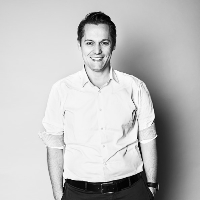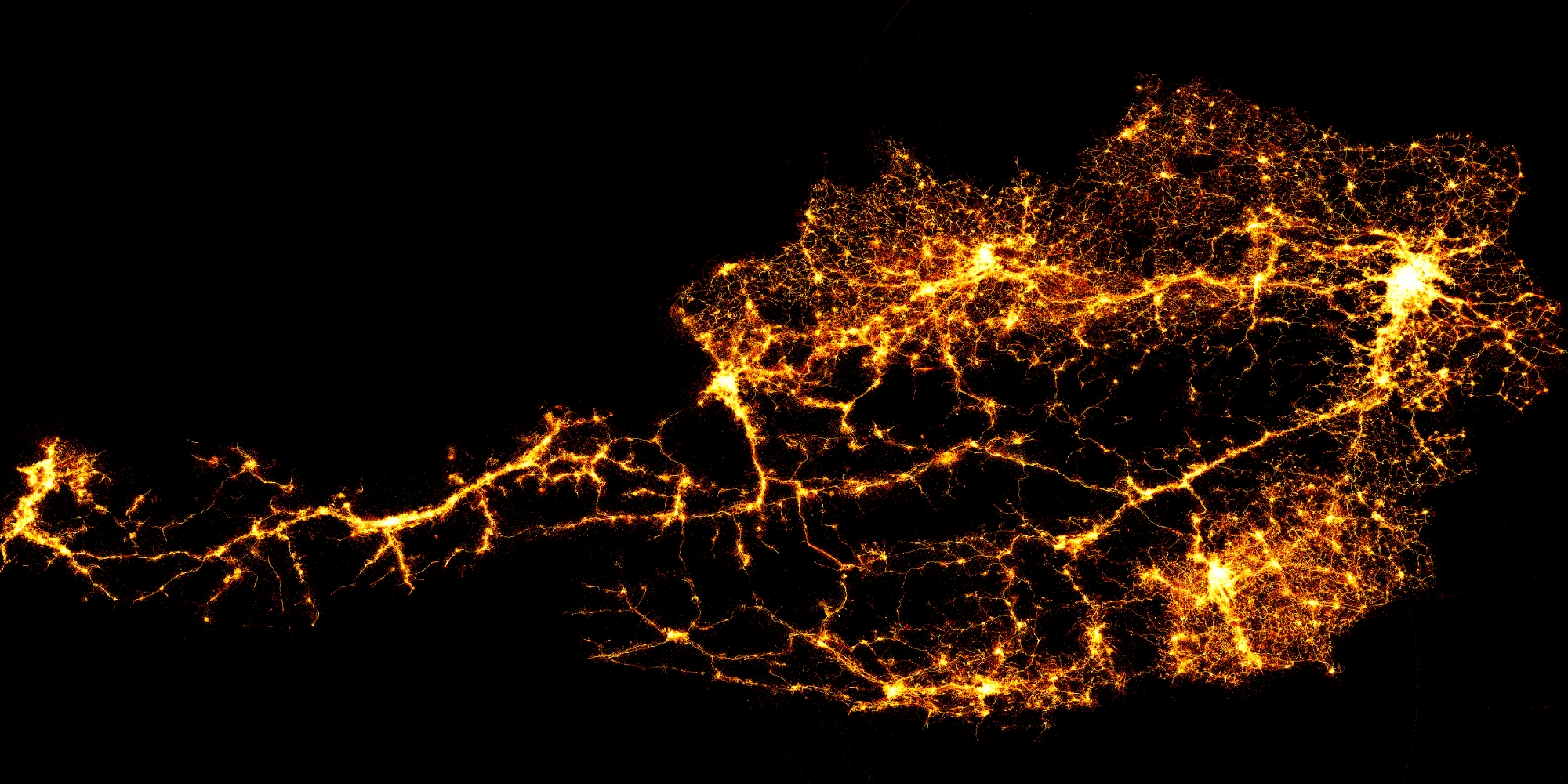Big Data as a chance to fight the Corona virus? Or an attack on the privacy of citizens? Last week, a debate on data protection was also raised in Austria when it became public that the telecommunications provider A1 was providing user data to the corona crisis team to check the measures taken to prevent the spread of the virus. It was not known exactly what data was involved and in what form it would be handed over to the government. This is where Invenium comes in, a company that is closely linked to the Graz University of Technology.
But what exactly does Invenium do? “With our partner and data provider A1 we offer motion analysis based on anonymized mobile phone data. Most commonly we analyze Austria’s manifold tourist regions and cities – like the incredibly photogenic but notoriously crowded town of Hallstatt, or the city of Graz, our beloved hometown.” The company’s mission statement is: “Exploring human mobility at scale.” Michael Cik, one of the founders of Invenium, told us in an interview how this works exactly, why his technology can help in the Corona crisis and whether this is questionable in terms of data protection.
What exactly do you do, what does Invenium do?
Michael Cik: We do Data Analytics, which means we specialize in the analysis and preparation of data, with a strong focus on transportation. I come from this field myself. In 2012 I approached A1, an Austrian telecommunication company, and said that I would like to cooperate for traffic modeling. Traffic modelling means looking at where the population lives and works on the basis of models. This is used to build a model for the future that indicates in which direction individual and public transport will develop and where new infrastructure needs to be built. We use these models, statistical models, and enrich them with real data. In 2012, we thought we could include mobile phone data in the models in order to calibrate them better.
We have done research projects together with A1 from Graz University of Technology, including one project on how the mobile phone data, the mobile signalling data of a telecommunications company, would have to be anonymised in order to use it for research or even for commercial purposes.
How does it work, technically?
Michael Cik: Signalling data can be imagined like this: A telecommunications company has a monitoring system to determine how many people are registered on a tower in order to provide the infrastructure for the customers and for the system. This is not customer data, but technical data. With any mobile phone device, it is possible to determine the position of the device in relation to the tower. But this is not comparable to the GPS tracking of an app as it is done with various fitness apps, where you are marked exactly on a map and can see the route you have taken, for example. With signalling data one always jumps between the towers and gets an accuracy between 300 and 500 metres in urban areas, in rural areas the accuracy is even lower.
We throw all data into one pot and look at how many people are travelling between municipality A and municipality B and where heavily frequented areas are. I can abstract this information from the data, which then feeds the traffic models. We have done this and use it for questions in the areas of transport, tourism, retail and the event sector.
How does the data from A1 get to you?
Michael Cik: A1 has that data in their monitoring system, they take it, they throw away the simcard numbers and generate a coordinate point for a certain area. We get this information and generate statements like: Between municipalities A and B there are 50 or 100 or 200 people a day. So we can analyse the domestic traffic. In the case of a city centre, this could be a question: How many people move around Linz’s main square, where do they come from, where do they go afterwards, how long do they stay there? These are classic questions that we can answer.
After all, A1 is only one of several mobile phone providers, but is it still significant?
Michael Cik: We work with statistics and mathematics. We have 5.4 million SIM cards in the system, which is over 40 % of the total. If you know how large a sample is at 40%, extrapolated to the total population, then we have a very small fluctuation margin. We make statistical calculations, we make extrapolations and we really only provide customers with aggregated analysis results. The customer does not see the anonymised data from A1, but only a summary in aggregated form, adapted to the question.
How can what you’re doing help with the corona Crisis?
Michael Cik: We’ve been thinking about the theory of social contacting for some time. Here’s the point: The less social contact I have, the flatter the infection curve becomes. That’ s the basis of our thoughts. The lower the mobility, so the assumption, the lower is the social contacting. We have been doing these analyses for three years now, including commercial ones, and we thought we would see how much mobility is decreasing. We could calculate a daily mobility index for the corona task force, which the staff could then incorporate into their models. The members of the task force were all very enthusiastic about the topic and since then we have been looking at how much mobility is out every day, whether it remains the same etc. Our approach was not at all to observe anyone or anything, but rather to show the other modellers: The less mobility, the less social contacting – and this in turn has an effect on the flattening of the curve. That was our approach. Since then, we have been in 24-hour operation.

What do you answer when people are nevertheless concerned about their privacy?
Michael Cik: We have been to all the institutions – Chamber of Labor, TÜV, Data Protection Agency – for almost two years, and we have been audited by all of them in terms of privacy. I don’t understand the criticism, because that can only mean that people don’t understand what we do. We do not want to represent an individual in any way. We want to offer anonymous, aggregated analyses of data. We have always done that, we have been offering it for years.
A1 does the anonymization of the raw data, Invenium does the processing of the data and prepares the result. Our data is stored on strictly separated servers. A1 has its own server, we have our own server with our data and on a third server is the sensitive customer data of A1.
What do you think about the fact that tracking infected persons is being considered in Germany?
Michael Cik: That’s a completely different issue, it’s about personal data. If you were to take the raw data and do that, it would be absolutely not an option for us. We’ve always said, even together with A1, even if someone asked us we wouldn’t do it. If you do it once, the whole subject is ruined and we couldn’t do anything with it anymore. Nobody can force us to do it.

Michael Cik is Co-Founder of Invenium Data Insights and Deputy Head of the Institute for Roads and Transportation at Graz University of Technology. A graduate transport scientist, he has been working for many years on the topic of “Digitalisation in Transportation” and the question “How can I better understand people’s mobility?”
